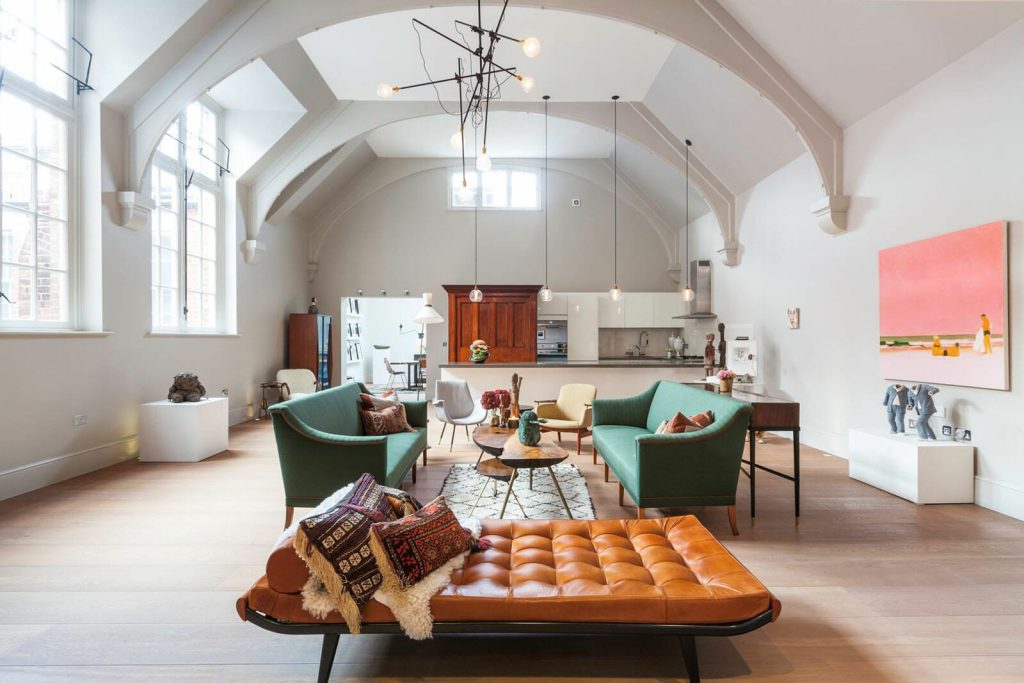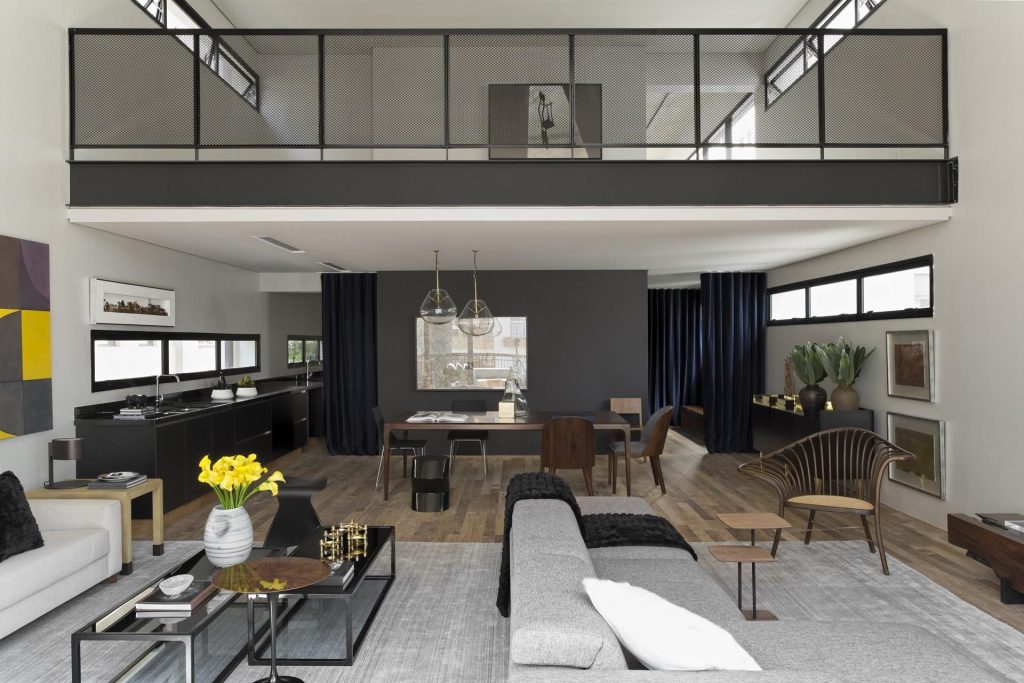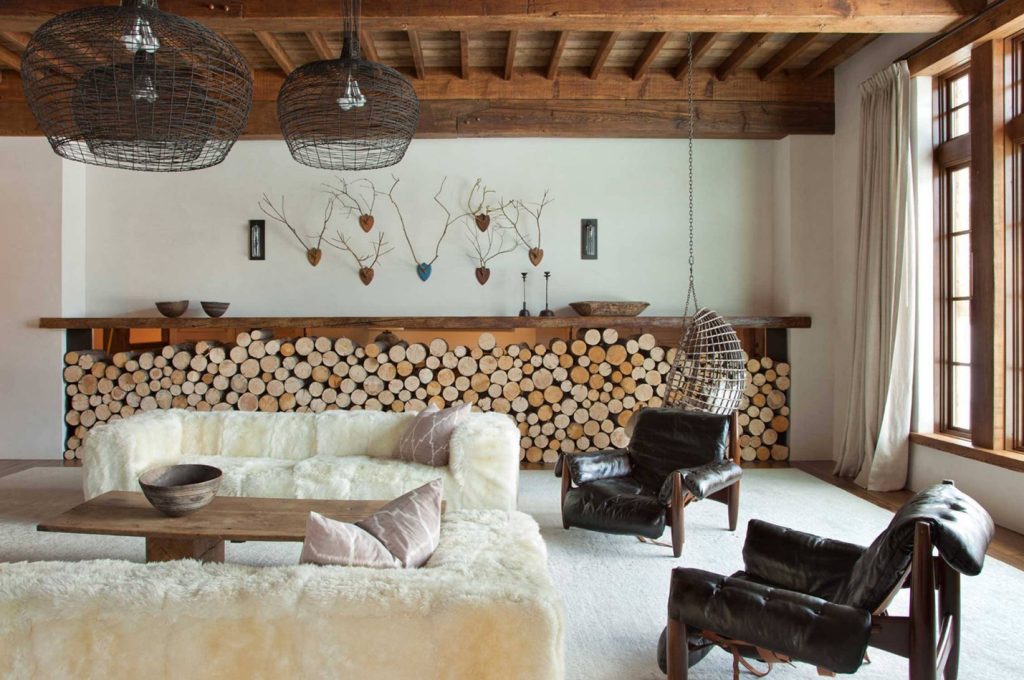Eclecticism is all about picking ideas and inspiration from a broad and diverse range of sources. The Eclectic Interior Design style creates homes that are rich and layered with ideas picked from design eras and styles spanning centuries.
This style brings contrasting style elements, colors, and textures together for a unique feel. This is chosen by people who prefer a bold décor and like expressing themselves creatively. There are hundreds of options to choose from and the output will depend on how the styles are merged.
For example, if you want to create a bohemian style feel to your living room, then you need to know the minute details of the design style and have access to the boho elements and furnishings that can help create that feel.
The background colors used are usually neutral to allow the designer to highlight the accessories and furniture. Rooms designed with eclectic style have multiple focal points and work on balancing colors and textures to not overwhelm the eye.
The core idea of the eclectic style is to use all the styles from history and create something fresh, unique, and mesmerizing. It is all about creativity and the ability to use the mind freely and innovatively.
Features of eclectic interior design style:
Many people associate the eclectic home décor with the ‘anything goes’ approach. However, it is a more purposeful and planned way of interior design.
It is a blend of different styles and periods creating layered home décor.
An eclectic interior designer uses neutral background colors and uses materials and items in an unexpected manner.
Walls are usually kept simple. They allow the designer to add accessories that make an impact. A busy wall will fail in bringing out the vibrancy of the accessories.
Both light and dark colors are used as required in eclectic design. If you want to add warmth and depth to a room, then you can use darker colors. On the other hand, if you want to make a
Space appears larger or highlights a boho décor, then light colors are your best bet.
You can play with a lot of textures and patterns to make your eclectic décor harmonize with your mood. Using textures that contrast can create a memorable eclectic feel to your home.
Remember, play enough to keep the eye interested but avoid overdoing it.
For an eclectic look, create distinct focal points by mixing and matching frames on a gallery wall. Use smooth textures right next to rough ones like marble next to wood, etc. Also, use soft surfaces next to the hard ones like an industrial coffee table next to a luxurious sofa.
The eclectic design ensures that everything has a place in each room. Accessories and adornments should have character without burdening the eclectic space.
Colors best suited with eclectic interior design style:
Eclectic homes with a simple color palette are usually accompanied by textures to add interest to the room design. Cohesiveness is the essence of eclectic decorating. Hence, many designers try to use one texture at least thrice throughout the home. To ensure harmony between a variety of styles, designers use contrasting colors and textures to create an eclectic mix.
Regardless of the color scheme, the core palette requires you to choose some core colors to complement the eclectic design. These colors work as a good place to start and create a cohesive and eclectic home décor. Ideally, choose a neutral hue and one accent color to get started. Use a neutral hue throughout the house. This will allow layering of other colors and not make the space seem overbearing. A single hue also helps in unifying the entire design.
Read also – How To Use Color Theory in Interior Design?
Furniture styles to be paired with eclectic decorating style:
Keeping in sync with the theme of the design, furniture styles are a mix of the old, classic, modern, and new. You need to mix and match different furniture design styles to create a unique outcome. Statement pieces are essential in a modern eclectic home. A statement piece can be a piece of furniture or wall art or anything else that makes your eclectic design thrive. You don’t need to bother about coordinating the statement piece. It is meant to stand out and be the focal point of the room.
Additionally, you can add baskets, card tables, drink trays, or bookshelves to the room to make it cozy and comfortable. Also, try combining the old with the new. For example, place a Lucite coffee table and pair it with a Louis XIV sofa. This contrast in design elements is what will make your home truly eclectic.

Similar to bohemian décor but with a decidedly grown-up allure, eclectic interior design is all about high-energy, spell binding finds and furnishings. Think bold color palettes, textures, and patterns brought together to create a rich mix with utility and focal points in mind.
Not to be mistaken for an anything goes spirit, eclectic design is all about consistency, go-to hues, and best of all, the freedom to explore creative directions with studied nuances.














